From OD data to agent-based-modelling for car-free futures
9 March 2022, Transport Data Science seminar
Dustin Carlino
Intro
- These slides: https://dabreegster.github.io/talks/tds_seminar_synthpop/slides.html
- Contribute: https://github.com/dabreegster/talks
About me
- https://twitter.com/CarlinoDustin
- A/B Street since 2018
- Alan Turing Institute since December 2021
- Not an expert on demand modeling; I just need it as input
- Traffic simulation community
- Transport data science community
- Videogame industry?! Watch Dogs: Legion
Talk outline
- A/B Street quick overview
- Travel demand models overview
- From UK OD data to a demand model
- Activity models
- Mode shift
- Exercises / discussion
Part 1: A/B Street overview
Squeeze detail out of OpenStreetMap

Edit the infrastructure

Simulator
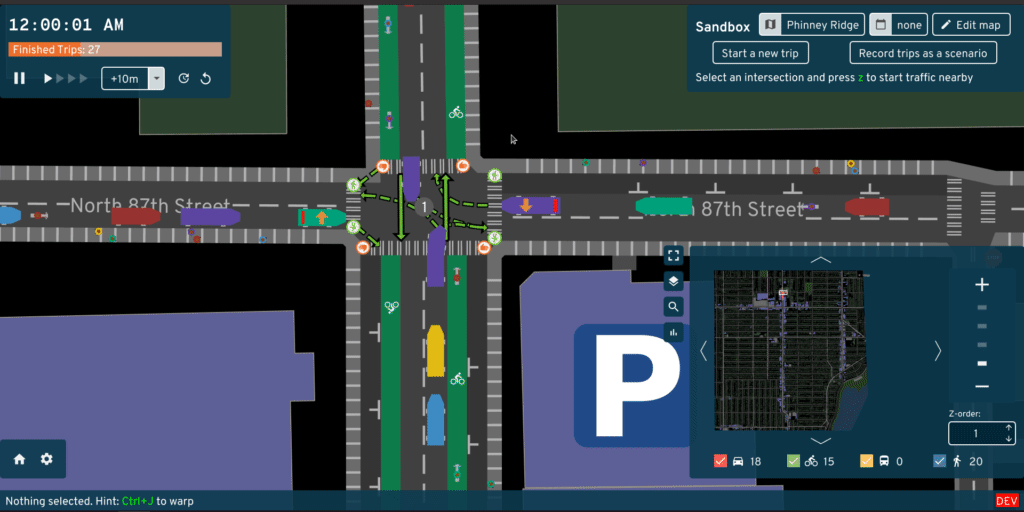
Plan bike networks

Low-traffic neighborhoods

15-minute neighborhoods

Arcade game, “edutainment”

Architecture

Architecture
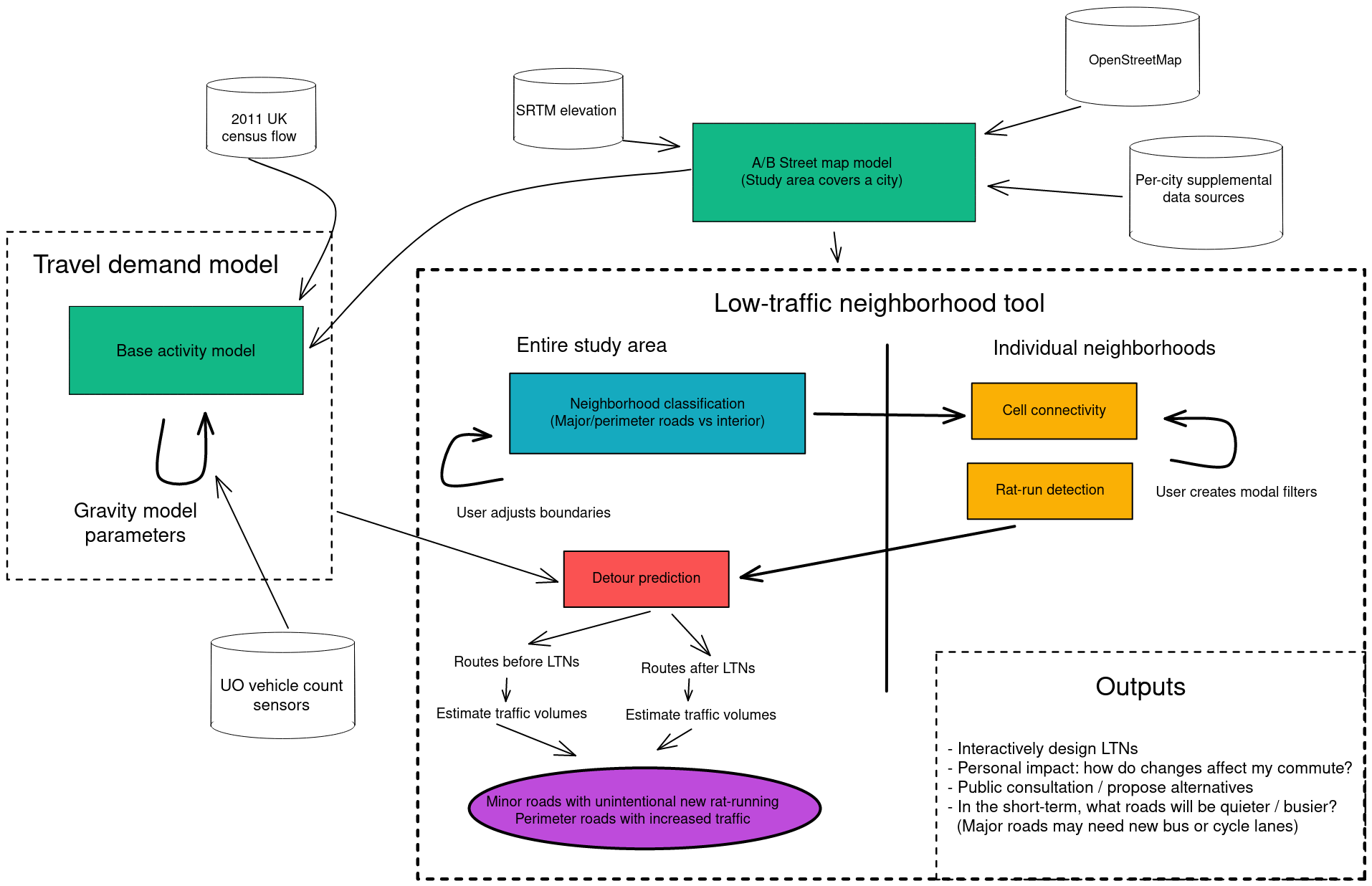
Components
- osm2lanes
- Planned
- osm2polygons
- census data exploration
- synthpop tools
Part 2: Demand model overview

What
{
"scenario_name": "minimal",
"people": [
{
"trips": [
{
"departure": 10000,
"origin": {
"longitude": -122.303723,
"latitude": 47.6372834
},
"destination": {
"longitude": -122.31905,
"latitude": 47.63786
},
"mode": "Bike",
"purpose": "Meal"
},
{
"departure": 12000000,
"origin": {
"longitude": -122.31905,
"latitude": 47.63786
},
"destination": {
"longitude": -122.3075948,
"latitude": 47.6394773
},
"mode": "Walk",
"purpose": "Recreation"
}
]
}
]
}https://a-b-street.github.io/docs/tech/dev/formats/scenarios.html
What
- More attributes about people
- vehicle ownership
- routing preference
- willing to pay toll road
- comfortable biking up-hills, at night, alongside fast traffic
What
- One “typical” weekday?
- Different scenario for weekends, special events
- People have different travel behavior daily
- Dangers of disaggregation
Use cases
- traffic simulation
- low-traffic neighborhoods: where do people drive, to predict detours
- PCT & Ungap the Map: look for short driving trips that might cycle instead
- RAMP: daily behavior in shared spaces for COVID transmission
- broken down by activity – entertainment, work, home, retail
- lockdown behavior, risk at venues
Some open source travel demand models
Part 3: Let’s build one for the UK!
Input data

wu03ew_v2: 2011, Location of usual residence and Place of work by Method of travel to work- Old, pre-pandemic
- Only home -> work
Input data: MSOA zones
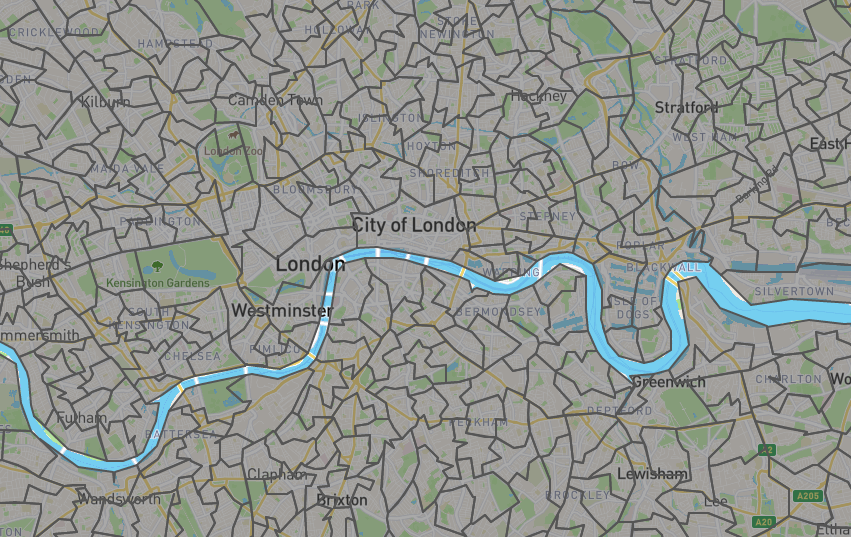
Desire line
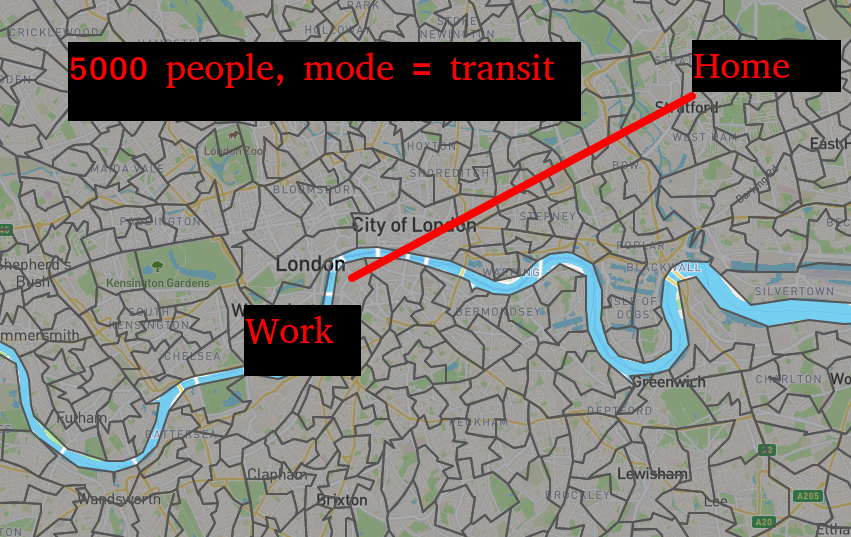
Overall idea
Home 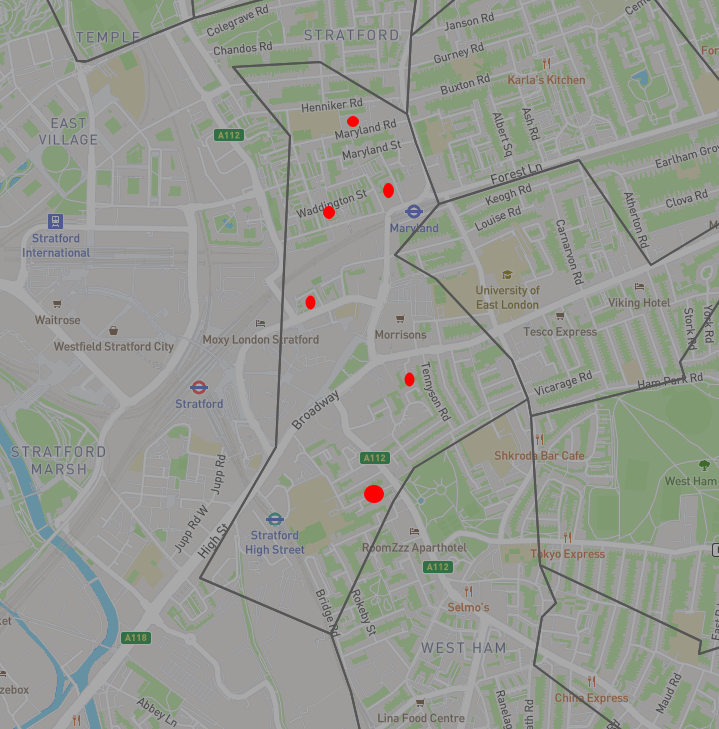
Work 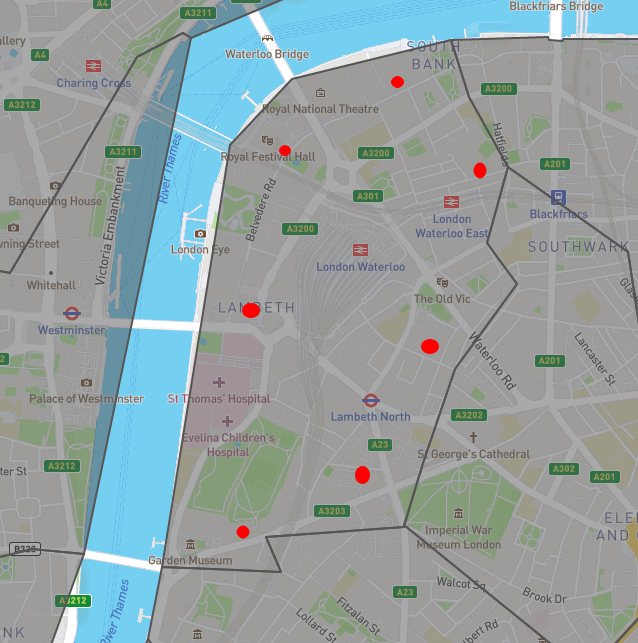
Overall idea
- For each (origin, destination, mode) desire line
- Repeat for the number of trips here
- Sample an origin and destination from the MSOA
- Create a person who goes home -> work in AM, work -> home in PM
- Repeat for the number of trips here
Desire lines
{
from_zone: zone123,
to_zone: zone456,
mode: walk, bike, drive...,
number_trips: 500
}- Re-shape the input into this format
- One mode per entry
- Filter + simplify the modes
- Why have an intermediate common format?
Jittering: sampling an origin or destination
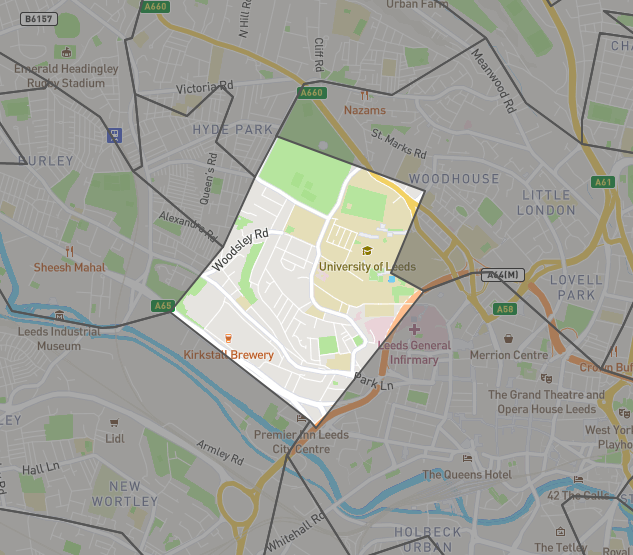
- Just inside the study area
- odjitter
- Random points?
- Origins: buildings where people live
- Destinations: buildings where people work
Buildings from OpenStreetMap tags
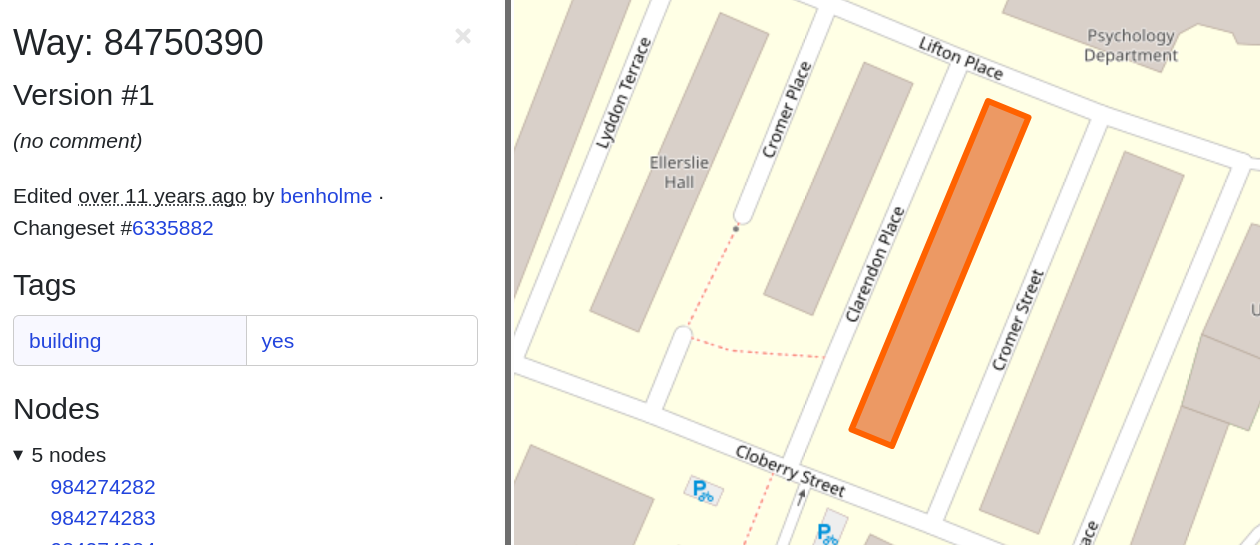
- Building type is rarely tagged
- https://taginfo.openstreetmap.org/keys/building
Buildings from OpenStreetMap tags
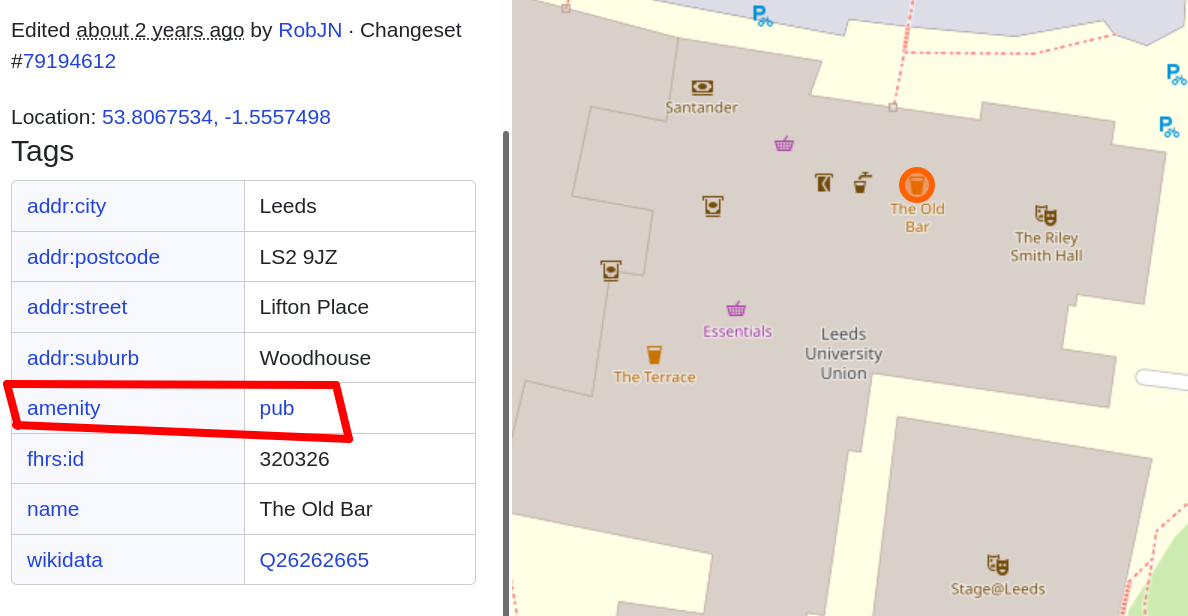
- Make sure your library gives you the right data,
building=shop - Just look at the data in OSM
Weighted choices (for origins)
- single-family home vs tower block
- area of the polygon
building:levels
- Colouring London
- Seattle housing units
- Use zoning codes?
- OpenAddresses – one housing unit per address?
Trip attractor tables (for destinations)

- cafe vs shopping mall
- Trip attractor table
- ITE publishes one
What data could help us pick better?
- Desire line breakdown by Standard Industry Codes?
- NOMIS UKBC
Aside: missing buildings in OSM

- https://www.openstreetmap.org/#map=14/51.5318/0.1192
- OSM isn’t perfect, check your data
- Procedural generation
- limitations
- Alternate data: OS building footprints (ZoomStack), OpenAddresses
Study area size

- We can’t just keep expanding our study area forever
- Some trips will begin or end off-map
- Use % overlap to scale number of trips
Jittering when out-of-bounds
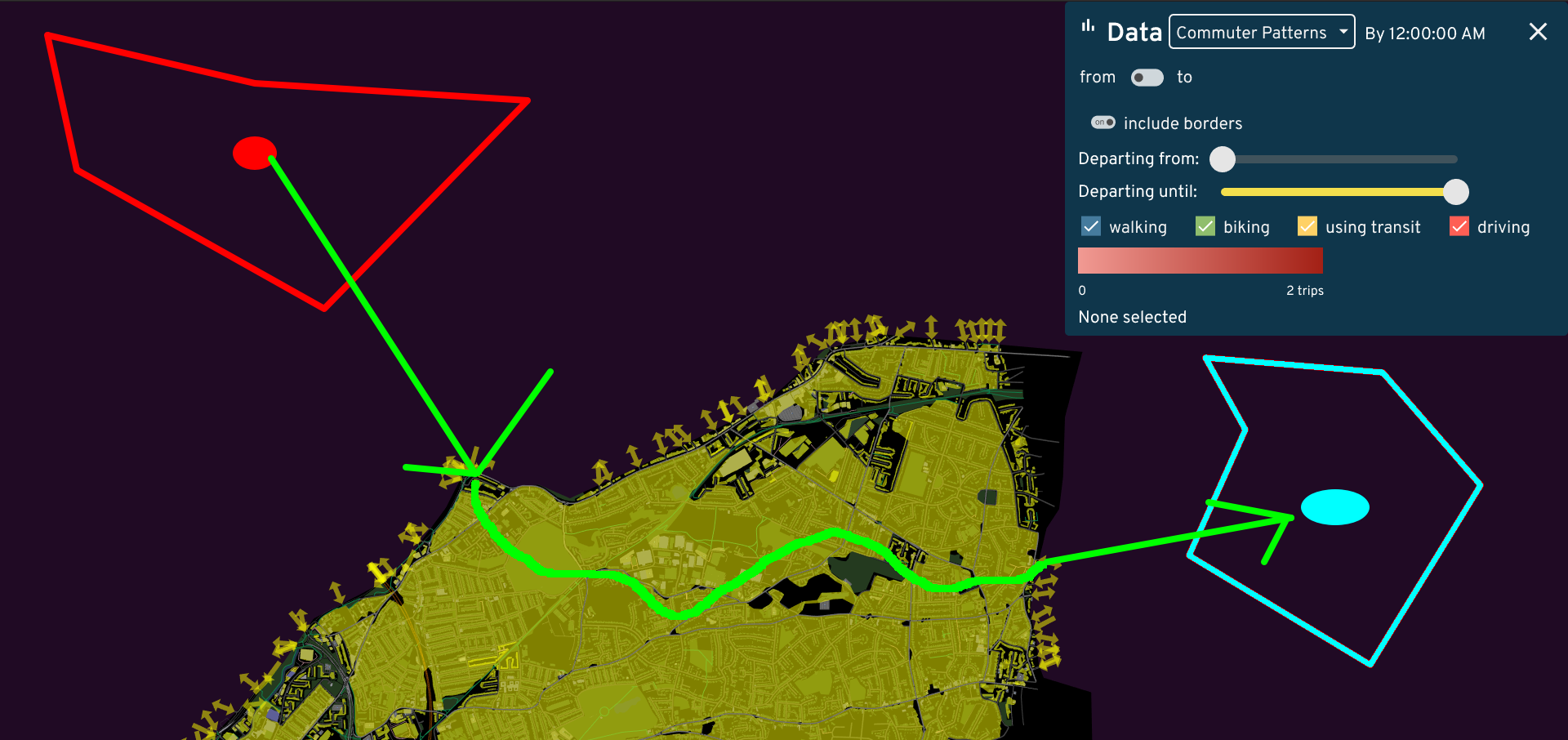
- We don’t know off-map buildings
- Snap to a border
- Nearest Euclidean distance?
- Weight by road type?
Jittering when out-of-bounds

- Quickly pruning desire lines
- Or just do pathfinding on a larger map?
Popping the stack

Popping the stack
Home 
Work 
Popping the stack
- Issues we covered
- OSM building tagging
- Missing OSM buildings
- Partly out-of-bounds zones
- Off-map origins/destinations
Enjoying the results
- Let’s simulate the results!
Dangers of using a microsimulation
- Routing
- Traffic signal timing
- Parking
- Conflicting movements near complex junctions
Re-aggregating
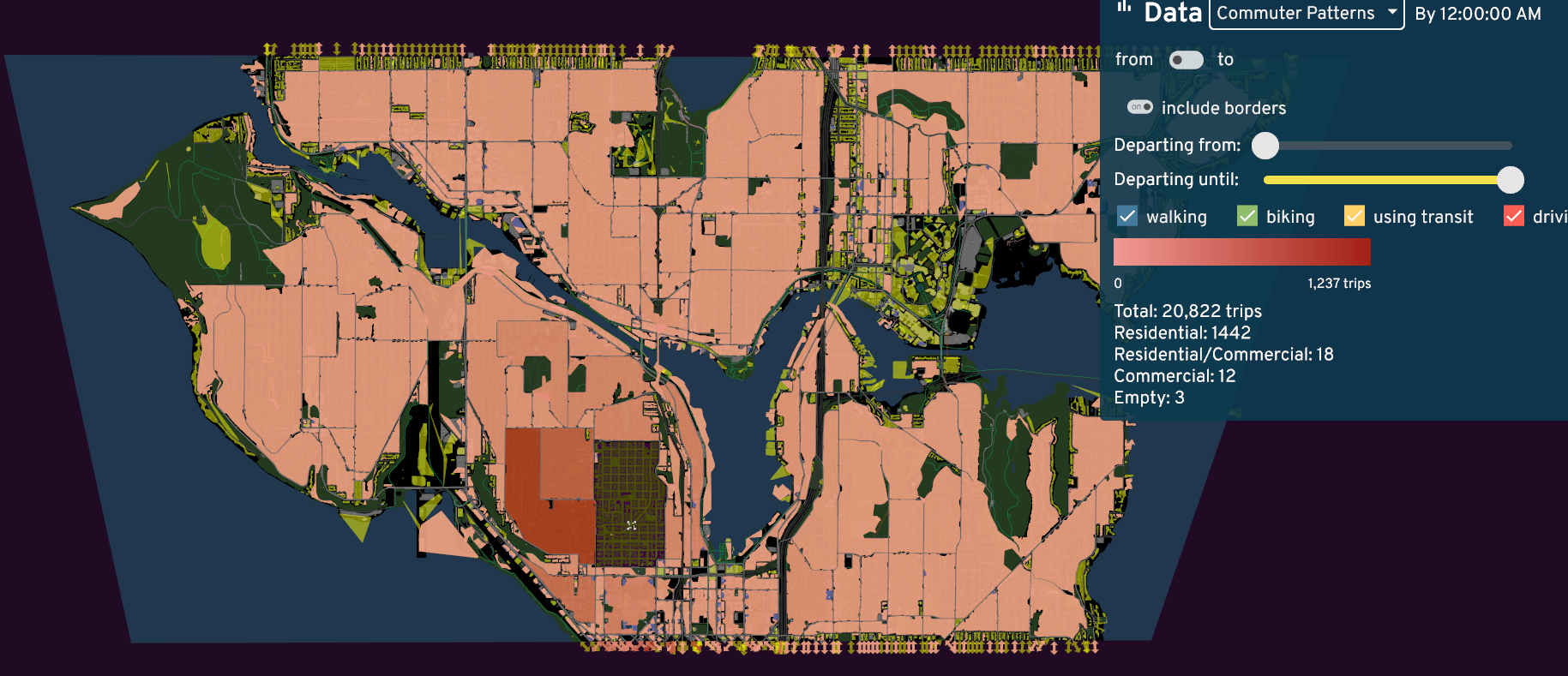
Part 4: Activity models
- Limitations of the previous approach:
- You need data
- Only home to work
- What are activity models?
The pipeline
- Input
- Number of people living in a zone
- OpenStreetMap
- Per-person
- Assign a building as a home
- Assign an “archetype” – student, worker, care-taker
- Assign a schedule
- Pick buildings matching each activity
- Assign mode
Archetypes
- Student, worker, care-taker
- Other ideas?
- What data would help us assign these?
- Age, employment
Archetype to schedule
- A student…
- leaves home between 8-11
- 95% of the time, spends 30 minutes on breakfast
- goes to school for 3-6 hours
- 30% of the time, spends 20-30 minutes on lunch
- 60% of the time, spends 2 hours on “entertainment” – otherwise, 0.5-1.5 hours on errands
- returns home
Data-driven schedules?
- time use surveys
Where do activities occur?
- breakfast:
cafe - lunch:
pub,food_court,fast_food - dinner:
restaurant,theatre,biergarten - school:
college,kindergarten,language_school,library,music_school,university, - entertainment, errands, financial, healthcare, home, work
- https://github.com/a-b-street/abstreet/blob/b969dbffe1bbb7a741b689be7e8f87b1d55a82f1/popdat/src/make_person.rs#L64
Gravity model + mode choice
- Attraction based on venue type
- Advanced: based on income, prefer fancy vs cheap restaurant
- Repulsion based on cost of getting there
- Mode choice weighted by costs
- but if know vehicle ownership, age of people…
Activity models for real
- Soundcast
- Plenty of reading material here!
- Activity model primer by TRB
- Mode choice
- NorMITs
Even Soundcast isn’t meant for this level of disaggregation
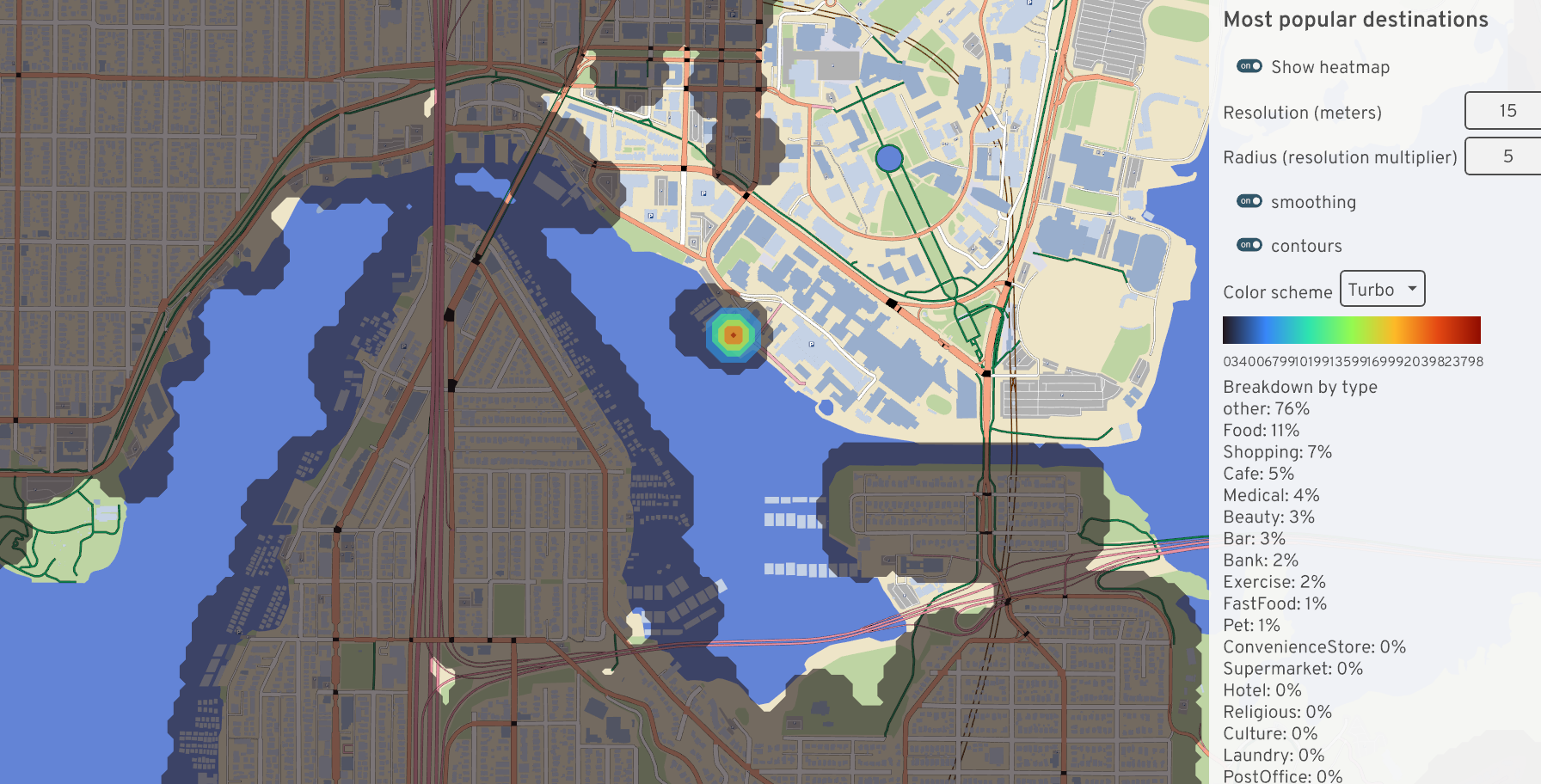
Part 5: Mode shift
- The most important question: how do planners convince people to change travel behavior?
- Public transit: frequency, reliability, safety, price, coverage?
- Cycling: safety, secure parking, showering at work, subsidizing e-bikes, culture?
An application of travel demand models
- A small piece of the puzzle: PCT and Ungap the Map
- Where should cycling interventions be prioritized?
- Pipeline
- Find (origin, destination) of driving trips
- Filter by max time spent cycling and uphill distance
- Convert to a route network, look for popular segments without cycle infrastructure
Questions
- How do we calculate the cycling routes? (fastest vs quietest)
- How much of a route has to be safe for someone to consider mode shift?
Part 6: Exercises / discussion
- Install A/B Street
- Import a new place
- Procedurally generate buildings
- Run a traffic simulation, observe problems
- Try out LTN, 15-minute, other tools
- Let’s edit OSM!
Discussions
- Region-specific data sources for improving what we talked about today
- How to calibrate a travel demand model?
- What data tells us when we’re realistic?
- What parameters change?
- Do we need to start from scratch to make a model for new regions?
Notes
./cli generate-houses \
--map data/system/us/seattle/maps/montlake.bin \
--num-required 1 \
--output houses.json